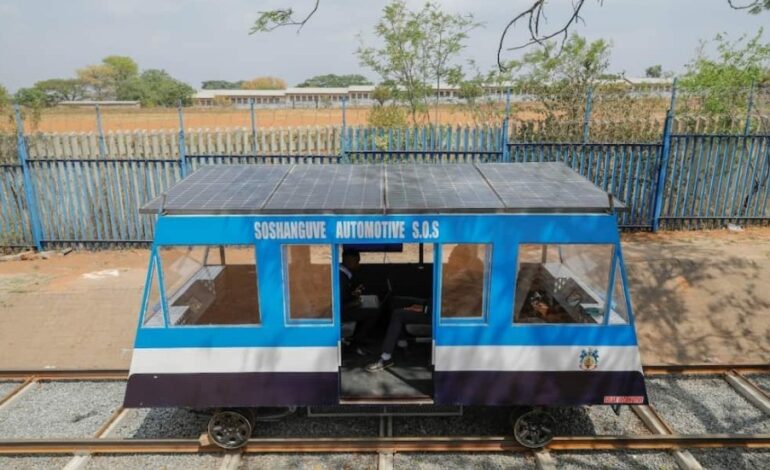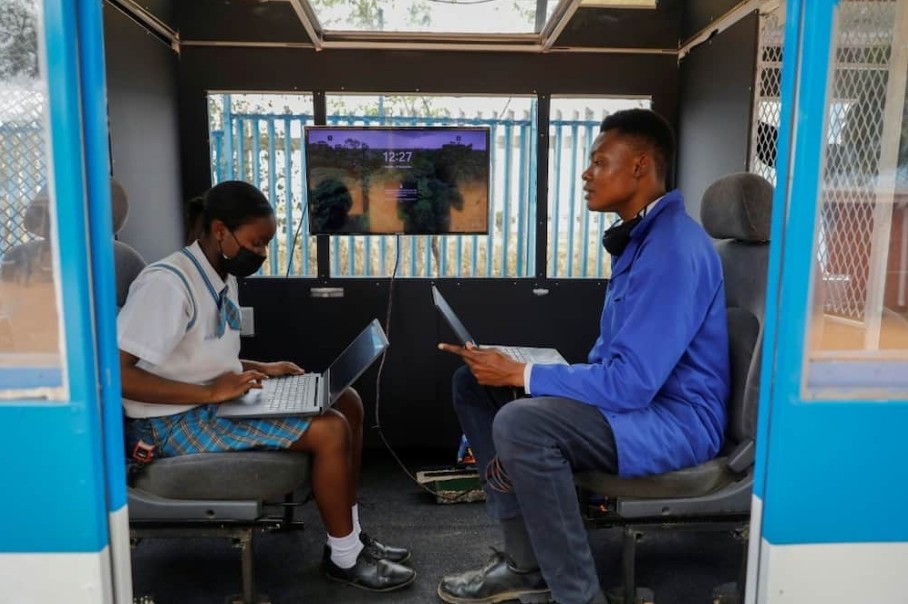
Ekeomah Atuonwu
Students in a township in South Africa 🇿🇦 have witnessed their parents’ struggles for years as they attempted to commute daily by train, which was sometimes hampered by cable thefts and power shortages.
Twenty students created South Africa’s first entirely solar-powered train in response to the emergency. The angular blue and white test train, which has solar panels mounted on the roof, travels down a test track that is 18 meters (60 feet) long in the Soshanguve township, which is located north of Pretoria.
In South Africa, trains are the most affordable form of transportation and are primarily used by the working class and poor.
18-year-old Ronnie Masindi remarked, “Our parents… no longer utilize trains (because of) cable theft… and load shedding,” referring to rolling blackouts brought on by malfunctions at outdated and improperly maintained coal-powered plants.
Ronnie Masindi

To avoid a complete nationwide blackout, the state-owned power provider Eskom began implementing on-and-off power rationing 15 years ago.
The load-shedding, as the power outages are known locally, has gotten worse over time, hurting business and industry, including rail services. As a result of the economic hardships caused by the pandemic, which fueled an increase in cable theft, infrastructure provider Transnet has struggled to maintain seamless rail service.
According to the National Households Travel Survey, the proportion of people who used public transportation on trains had decreased by about two-thirds by 2020 compared to 2013, and many commuters had switched to more expensive minibus cabs.
Masindi stated that they made the decision to “design and construct a solar-powered train that moves on solar energy instead of (mains) electricity. There have been difficulties along the way.
The prototype locomotive’s manufacturing was delayed by a shortage of money, and later, government assistance was added.
Lethabo Nkadimeng, a 17-year-old pupil, added, “It wasn’t a straight line.” “It was like hiking up to the mountain’s highest peak.” The train, which has a top speed of 30 kilometers per hour (20 miles per hour), was recently on display at a university innovation event.
The prototype can currently run on the track set up on a school’s property for ten round trips. It will be put to use for additional research before being given as a possible model for the government to use.
It took the students two years to build, and it is equipped with car seats and a flat-screen TV for the enjoyment of passengers. The project’s project manager, Kgomotso Maimane, stated, “What we have realized is, if we give township kids space, resources, and a little mentorship they can achieve whatever that any student can do around the world.”




